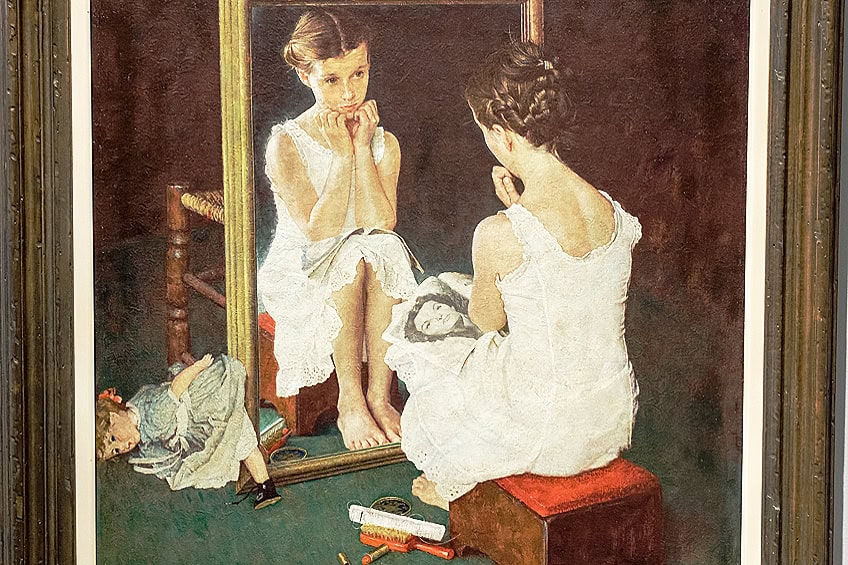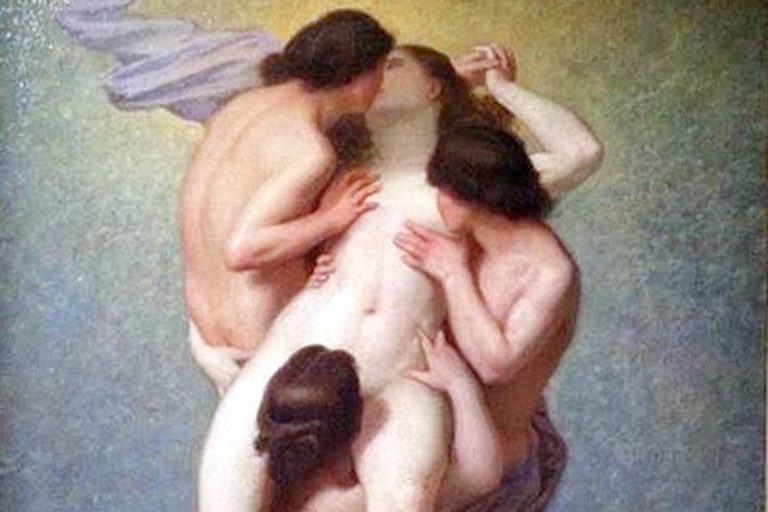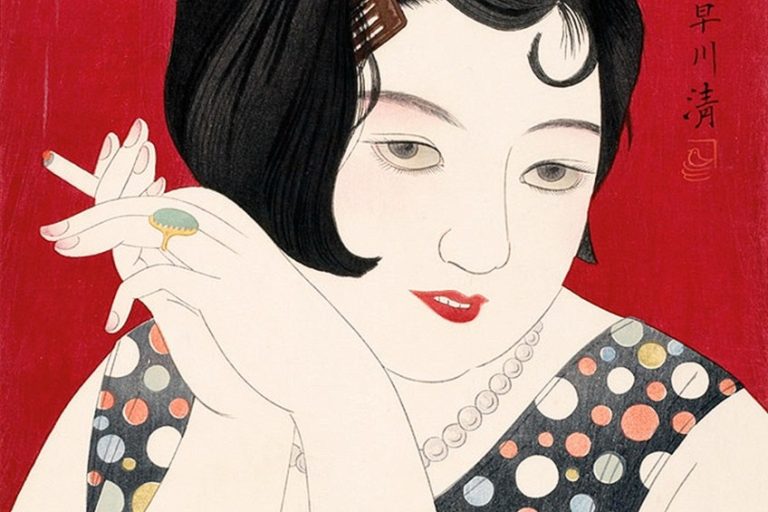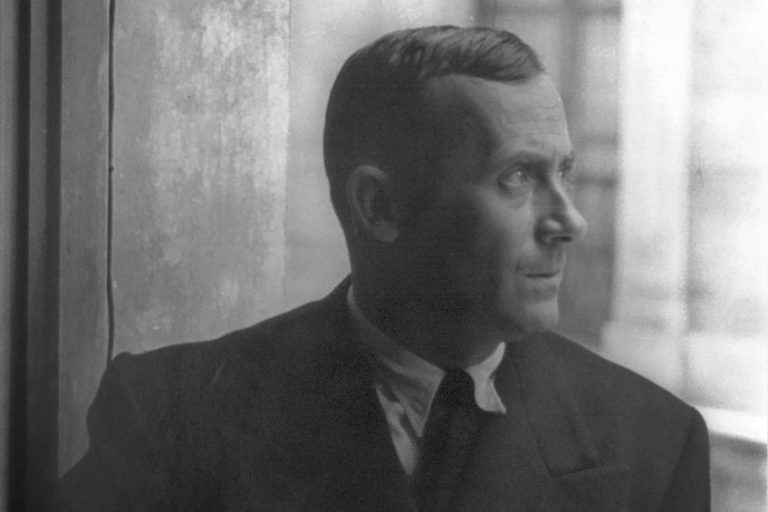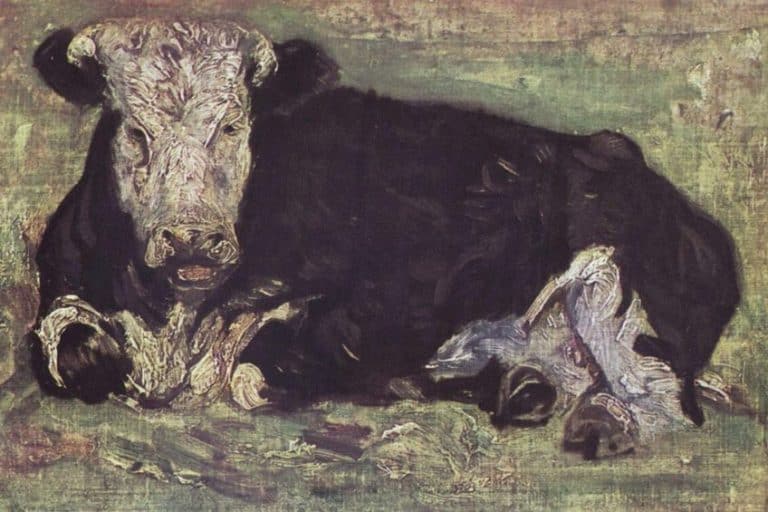“Girl at Mirror” by Norman Rockwell – A Glimpse of Innocence
Girl at Mirror, painted by Norman Rockwell in 1954, is a poignant and reflective work that captures the tender moment of a young girl contemplating her reflection. This painting, a hallmark of Rockwell’s ability to convey deep emotion and narrative through everyday scenes, depicts a girl seated before a mirror, her face filled with curiosity and introspection. The juxtaposition of her youthful innocence with the adult glamour represented by a magazine featuring a glamorous actress creates a powerful commentary on self-image and the societal pressures of beauty. Through his meticulous attention to detail and expressive use of light and composition, Rockwell invites viewers to share in the intimate moment of personal discovery and the universal experience of growing up.
Key Takeaways
- Girl at Mirror exemplifies a young girl’s self-reflection and the cusp of her transition from childhood to adolescence.
- Norman Rockwell’s 1954 painting is recognized for its compelling portrayal of American life and emotional depth.
- The artwork, favored for its narrative quality, continues to engage viewers, reflecting its enduring legacy and relevance.
The Creation of Girl at Mirror
| Artist | Norman Rockwell (1894 – 1978) |
| Date Created | 1954 |
| Medium | Oil on canvas |
| Genre | Genre painting, Illustration |
| Period/Movement | American Realism, Regionalism |
| Dimensions (cm) | 107 x 86 |
| Series/Versions | Standalone work, originally created as a cover for The Saturday Evening Post |
| Where Is It Housed? | Normal Rockwell Museum, Stockbridge, Massachusetts, United States |
| What It Is Worth | Estimated at several million USD, though the exact value can vary based on market conditions and provenance. |
Norman Rockwell’s painting, Girl at Mirror, has resonated with audiences since its creation in 1954 due to its intimate and reflective portrayal of a young girl examining her self-image. As an artist known for capturing quintessential American life, Rockwell’s works often evoke a sense of nostalgia and relatable themes centered on everyday experiences. Girl at Mirror is no exception; it intertwines innocence and the complexities of growing up, as the subject, a young girl, peers into the mirror while a magazine with a glamorous woman lies beside her.

This piece illustrates the girl’s transition from childhood to adolescence, a theme Rockwell explored during his tenure with The Saturday Evening Post. The visible presence of a discarded doll suggests a poignant moment of self-awareness and the evolving identity of the girl as she contemplates her reflection. Rockwell’s attention to detail and his mastery of visual storytelling invite viewers to consider the universal experience of growth and self-perception.
Cultural and Historical Context
Norman Rockwell painted Girl at Mirror on March 6, 1954, against a backdrop of post-war America when traditional social values were in flux. This oil on canvas work was created for the cover of The Saturday Evening Post, a publication that often depicted the quintessential American life.
The 1950s were a period marked by a focus on the family, and Rockwell’s paintings frequently explored the narratives within the American domestic sphere.
Norman Rockwell’s Inspiration
Rockwell’s inspiration for Girl at Mirror derived from two main sources. Firstly, Rockwell’s reference files included examples from the art world, notably Picasso’s Girl at Mirror and Elizabeth Vigee-Lebrun’s The Artist’s Daughter, suggesting a study of reflection and self-perception in art. Additionally, it is rumored that the illustration was inspired by the composition of a painting by Édouard Manet, as mentioned by fellow illustrator George Hughes. Girl at Mirror today resides at the Norman Rockwell Museum in Stockbridge, Massachusetts, where it continues to be a testament to Rockwell’s narrative ability and keen eye for detail.

Artistic Elements and Analysis
Norman Rockwell’s Girl at Mirror delves into the transitional phase of youth through its meticulous composition and poignant symbolism. This section unpacks the artistic nuance behind the painting’s visual narrative.
Subject Matter and Color
The subject of Girl at Mirror is a young girl seated before a mirror, engaged in contemplation. The painting captures her in a moment of introspection as she compares her reflection with the image of a woman in a magazine. Rockwell employs a subdued color palette dominated by soft pinks and whites, which not only echo the innocence and vulnerability of youth but also create a contrasting backdrop for the dark, somber hues of the girl’s hair and the discarded doll.
Composition and Technique
Rockwell’s composition places the girl centrally, with the mirror to her side, creating a dialogue between the girl’s perceived self and her idealized self. His technique is grounded in realism, with detailed brushwork that brings a lifelike quality to the girl’s hair and the textures of her clothing.
The chair and doll are relegated to the edges of the scene, emphasizing the girl’s transition from childhood to adolescence.
Symbolism and Themes
Symbolism is rife within Girl at Mirror. The mirror reflects the girl’s physical appearance and suggests introspection, while the magazine represents societal standards of beauty. The hairbrush in her hand symbolizes grooming and the care one takes in self-presentation. Potently, the doll, left behind on the floor, symbolizes the girl’s departure from childhood. The themes of growing up and self-awareness are thus vividly depicted through these symbolic elements.
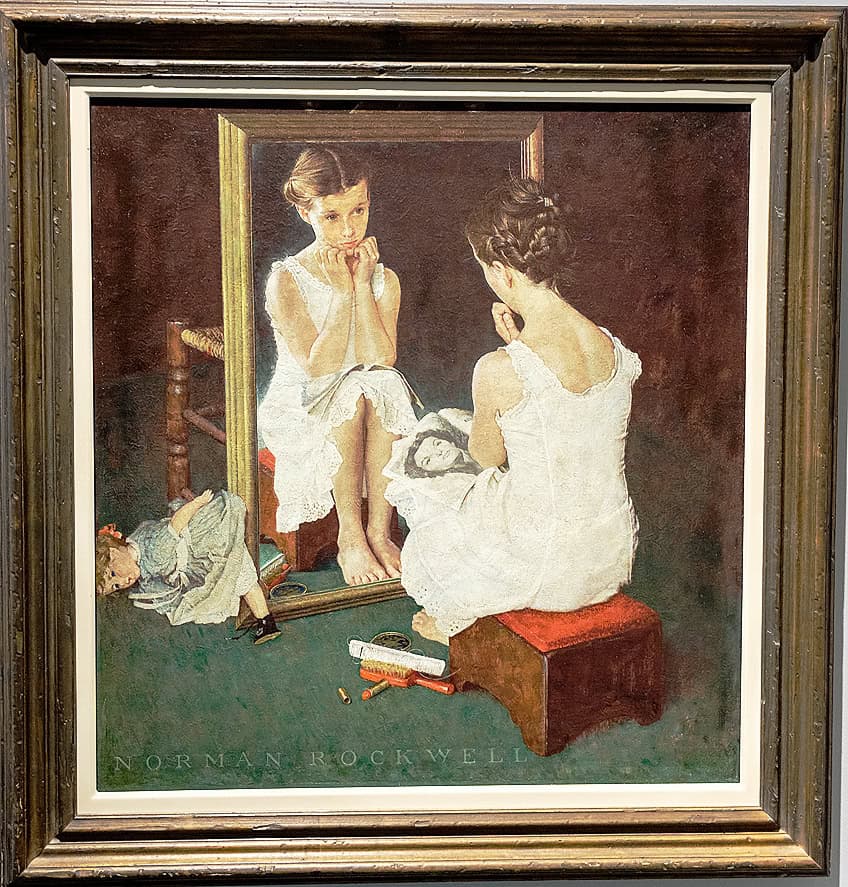
Reception and Legacy
Girl at Mirror by Norman Rockwell has consistently elicited admiration from critics and the public since its debut, and its impact extends into the realms of popular culture and fine art.
Critical Acclaim and Public Response
When Norman Rockwell’s Girl at Mirror graced the cover of The Saturday Evening Post on March 6, 1954, critics and the public were confronted with a powerful illustration that stretched beyond its initial function as a cover illustration. Rockwell’s poignant interpretation of youth and beauty resonated with audiences, and it was lauded for its insight into the human condition and the intricacies of growing up. Celebrated for its narrative depth, the artwork cemented Rockwell’s reputation as a fine artist who could weave a complete story through a single image.
Comparisons were drawn between Rockwell’s work and the introspective qualities found in the paintings of notable artists like Édouard Manet.
Influence on Pop Culture and Art
The enduring influence of Girl at Mirror can be observed in manifold aspects of art and popular culture. Rockwell’s piece is often cited alongside works of George Hughes and illustrious painters such as Picasso and Elizabeth Vigee-Lebrun, showcasing a lineage of exploration with the theme of self-reflection. This painting has sparked conversations among critics and viewers alike as it bridges the gap between commercial illustrations and fine art. The work’s thematic exploration and technical mastery continue to serve as a touchstone for illustrators and artists, capturing the nuanced transition from childhood to adolescence—themes that remain ever-relevant in contemporary discourse.
Connecting to the Audience
Norman Rockwell’s Girl at Mirror resonates with viewers by reflecting on universal themes of self-perception and the transition from childhood to adulthood.
Concepts of Beauty and Self-Image
The painting depicts a young girl sitting before a mirror, with a magazine that features a glamorous woman on the cover lying next to her. This juxtaposition invites the audience to explore the impact of societal beauty standards on one’s self-image.
The girl’s thoughtful gaze as she compares her own reflection to the appearance of the woman speaks to the internal questioning that many individuals experience regarding beauty and attractiveness.
Youth and the Idea of Growing Up
In Girl at Mirror, the presence of a discarded doll tucked away at the corner of the mirror signifies the girl’s transition from childhood. The doll represents a piece of her past, hinting at the nostalgia and complex emotions associated with growing up. Rockwell captures not just any childhood experience, but a poignant moment of realization and change—it’s a universal idea of progress through life stages, from the innocence of youth to the complexities of adolescence.

In Girl at Mirror, Norman Rockwell masterfully encapsulates the delicate transition from childhood to adolescence, inviting viewers to reflect on their own experiences of self-discovery and identity. The painting’s enduring appeal lies in its universal theme and the subtle yet profound emotions it evokes. Rockwell’s keen observational skills and ability to portray the complexities of human emotion ensure that Girl at Mirror remains a timeless piece, resonating with audiences across generations. This work not only highlights Rockwell’s technical prowess but also his deep understanding of the human condition, solidifying his place as one of America’s most beloved artists.
Frequently Asked Questions
What Is the Significance of the Girl at Mirror Painting by Norman Rockwell?
Girl at Mirror is a reflective piece that captures the transition from childhood to adolescence. It depicts a young girl examining herself in a mirror, with a discarded doll by her side, symbolizing the end of her childhood as she aspires to the beauty of adulthood, represented by the magazine beside her.
How Does Girl at Mirror Reflect Norman Rockwell’s Artistic Style?
Rockwell’s artistic style in Girl at Mirror is characterized by its warm, realistic depiction of American life. The painting illustrates Rockwell’s talent for storytelling through detailed, approachable scenes that invite viewers to ponder the subject’s inner thoughts and feelings.
What Techniques Did Norman Rockwell Use When Painting Girl at Mirror?
Rockwell employed a meticulous approach to Girl at Mirror, utilizing careful composition and lighting to focus attention on the girl’s reflection and the contrasts between childhood and coming of age. His method involved photographing models and using various pictorial references to achieve precise and resonant imagery.
How Does Girl at Mirror Compare to Rockwell’s Other Works?
Girl at Mirror shares Rockwell’s common theme of capturing significant cultural and social narratives. While pieces like Rosie the Riveter and The Problem We All Live With address societal changes and racial integration, respectively, Girl at Mirror offers an intimate portrayal of personal growth, maintaining Rockwell’s focus on pivotal moments in individual lives.
Isabella studied at the University of Cape Town in South Africa and graduated with a Bachelor of Arts majoring in English Literature & Language and Psychology. Throughout her undergraduate years, she took Art History as an additional subject and absolutely loved it. Building on from her art history knowledge that began in high school, art has always been a particular area of fascination for her. From learning about artworks previously unknown to her, or sharpening her existing understanding of specific works, the ability to continue learning within this interesting sphere excites her greatly.
Her focal points of interest in art history encompass profiling specific artists and art movements, as it is these areas where she is able to really dig deep into the rich narrative of the art world. Additionally, she particularly enjoys exploring the different artistic styles of the 20th century, as well as the important impact that female artists have had on the development of art history.
Learn more about Isabella Meyer and the Art in Context Team.
Cite this Article
Isabella, Meyer, ““Girl at Mirror” by Norman Rockwell – A Glimpse of Innocence.” Art in Context. May 30, 2024. URL: https://artincontext.org/girl-at-mirror-by-norman-rockwell/
Meyer, I. (2024, 30 May). “Girl at Mirror” by Norman Rockwell – A Glimpse of Innocence. Art in Context. https://artincontext.org/girl-at-mirror-by-norman-rockwell/
Meyer, Isabella. ““Girl at Mirror” by Norman Rockwell – A Glimpse of Innocence.” Art in Context, May 30, 2024. https://artincontext.org/girl-at-mirror-by-norman-rockwell/.


